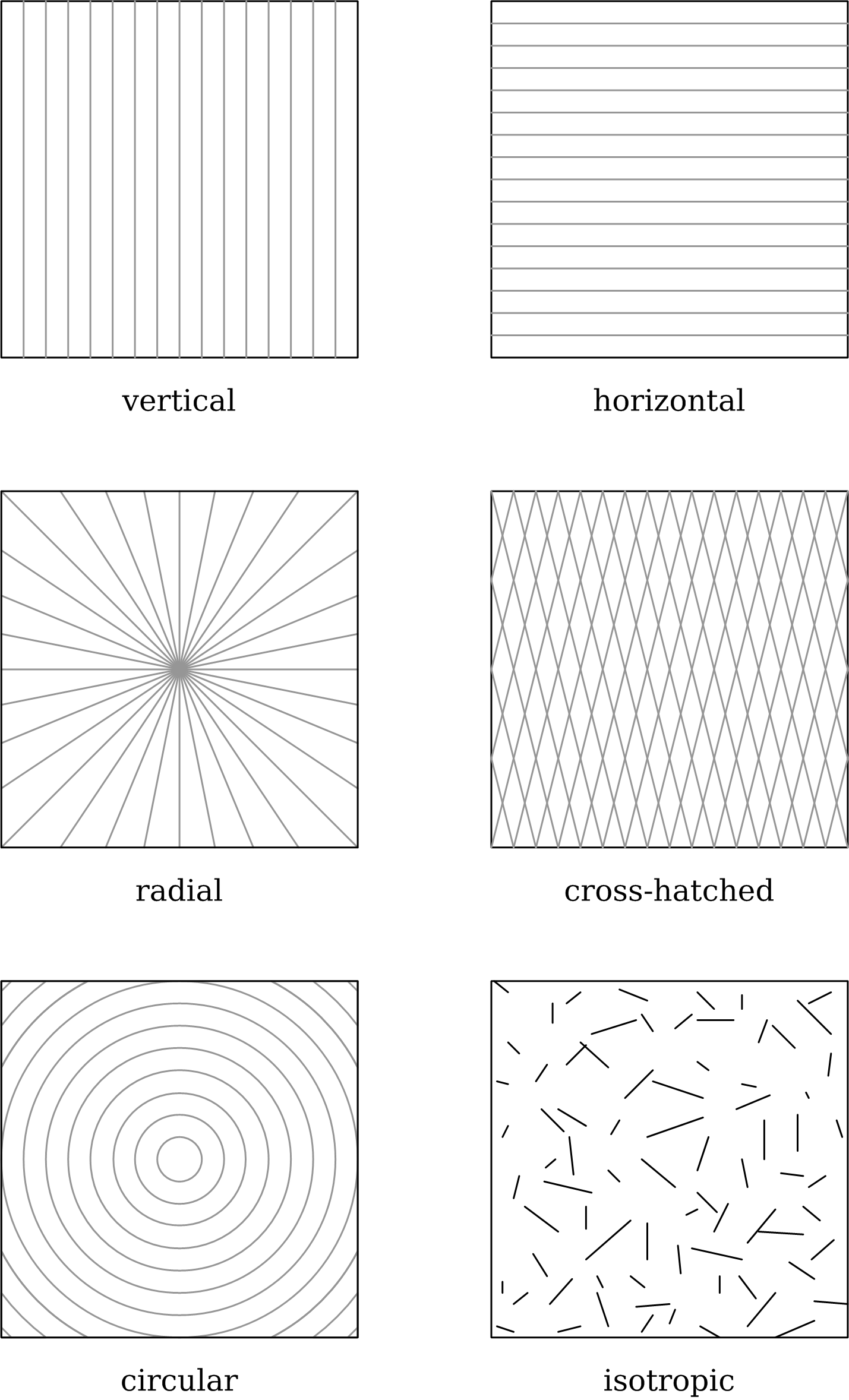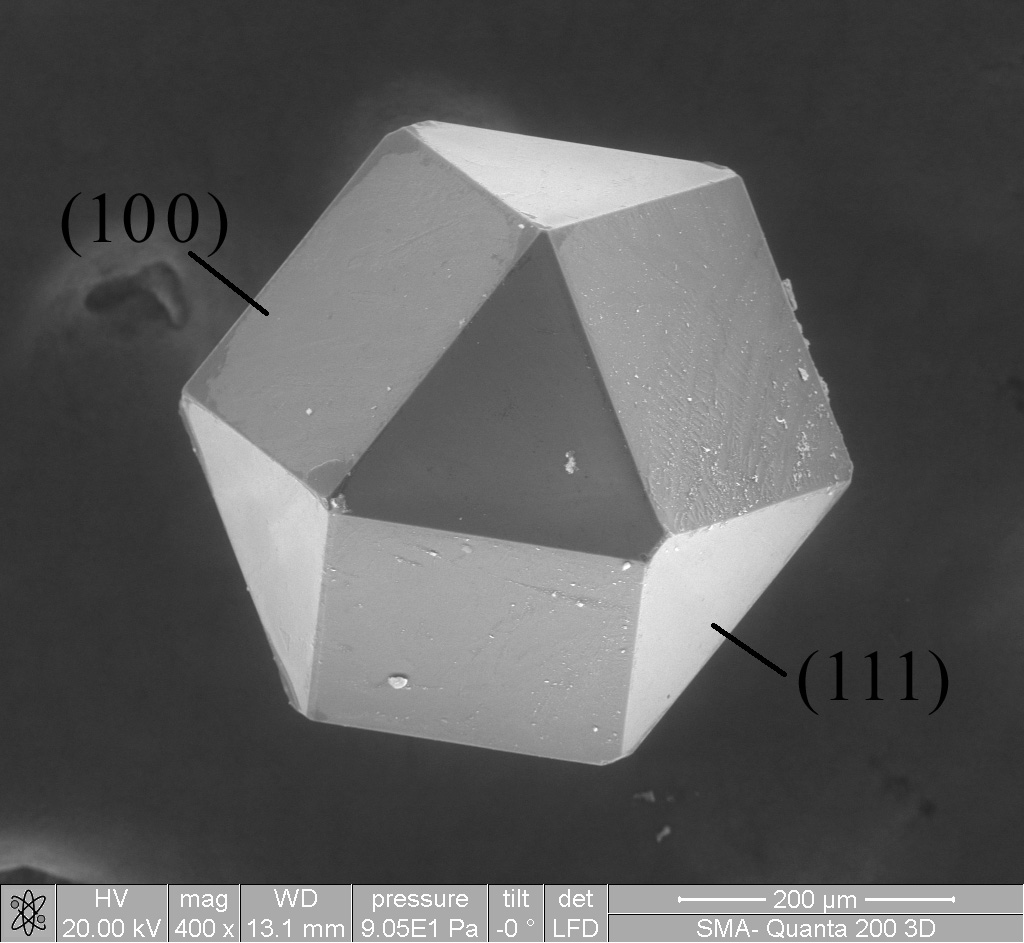|
Waviness
Waviness is the measurement of the more widely spaced component of surface texture. It is a broader view of roughness because it is more strictly defined as "the irregularities whose spacing is greater than the roughness sampling length". It can occur from machine or work deflections, chatter, residual stress, vibrations, or heat treatment.. Waviness should also be distinguished from flatness, both by its shorter spacing and its characteristic of being typically periodic in nature. Parameters There are several parameters for expressing waviness height, the most common being Wa & Wt, for ''average waviness'' and ''total waviness'', respectively. In the lateral direction along the surface, the ''waviness spacing'', Wsm, is another parameter that describes the mean spacing between periodic waviness peaks. There are numerous measurement settings which influence these resultant parameter values, which are mentioned below. One of the most important is the ''waviness evaluation l ... [...More Info...] [...Related Items...] OR: [Wikipedia] [Google] [Baidu] |
Surface Roughness
Surface roughness or simply roughness is the quality of a surface of not being smooth and it is hence linked to human ( haptic) perception of the surface texture. From a mathematical perspective it is related to the spatial variability structure of surfaces, and inherently it is a multiscale property. It has different interpretations and definitions depending on the disciplines considered. In surface metrology, surface roughness is a component of surface finish (surface texture). It is quantified by the deviations in the direction of the normal vector of a real surface from its ideal form. If these deviations are large, the surface is rough; if they are small, the surface is smooth. Roughness is typically assumed to be the high-frequency, short-wavelength component of a measured surface. However, in practice it is often necessary to know both the amplitude and frequency to ensure that a surface is fit for a purpose. Role and effect Roughness plays an important role in determin ... [...More Info...] [...Related Items...] OR: [Wikipedia] [Google] [Baidu] |
ISO 16610
ISO 16610: Geometrical product specifications (GPS) – Filtration is a standard series on filters for surface texture, and provides guidance on the use of these filters in various applications. Filters are used in surface texture in order reduce the bandwidth of analysis in order to obtain functional correlation with physical phenomena such as friction, wear, adhesion, etc. For example, filters are used to separate roughness and waviness from the primary profile, or to create a multiscale decomposition in order to identify the scale at which a phenomenon occurs. Historically, the first roughness measuring instruments - stylus profilometer - used to have electronic filters made of capacitors and resistors that filtered out low frequencies in order to retain frequencies that represent roughness. Later, digital filters replaced analog filters and international standards such as ISO 11562 for the Gaussian filter were published. Filter toolbox for surface texture Today, a full set ... [...More Info...] [...Related Items...] OR: [Wikipedia] [Google] [Baidu] |
Surface Texture
Surface finish, also known as surface texture or surface topography, is the nature of a surface as defined by the three characteristics of lay, surface roughness, and waviness.. It comprises the small, local deviations of a surface from the perfectly flat ideal (a true plane). Surface texture is one of the important factors that control friction and transfer layer formation during sliding. Considerable efforts have been made to study the influence of surface texture on friction and wear during sliding conditions. Surface textures can be isotropic or anisotropic. Sometimes, stick-slip friction phenomena can be observed during sliding, depending on surface texture. Each manufacturing process (such as the many kinds of machining) produces a surface texture. The process is usually optimized to ensure that the resulting texture is usable. If necessary, an additional process will be added to modify the initial texture. The latter process may be grinding (abrasive cutting), polishi ... [...More Info...] [...Related Items...] OR: [Wikipedia] [Google] [Baidu] |
Surface Texture Symbol
Surface finish, also known as surface texture or surface topography, is the nature of a surface as defined by the three characteristics of lay, surface roughness, and waviness.. It comprises the small, local deviations of a surface from the perfectly flat ideal (a true plane). Surface texture is one of the important factors that control friction and transfer layer formation during sliding. Considerable efforts have been made to study the influence of surface texture on friction and wear during sliding conditions. Surface textures can be isotropic or anisotropic. Sometimes, stick-slip friction phenomena can be observed during sliding, depending on surface texture. Each manufacturing process (such as the many kinds of machining) produces a surface texture. The process is usually optimized to ensure that the resulting texture is usable. If necessary, an additional process will be added to modify the initial texture. The latter process may be grinding (abrasive cutting), polishing ... [...More Info...] [...Related Items...] OR: [Wikipedia] [Google] [Baidu] |
Ball (bearing)
Bearing balls are special highly spherical and smooth balls, most commonly used in ball bearings, but also used as components in things like freewheel mechanisms. The balls themselves are commonly referred to as ball bearings. This is an example of a synecdoche. The balls come in many different ''grades''. These grades are defined by bodies such as the American Bearing Manufacturers Association (ABMA), a body which sets standards for the precision of bearing balls. They are manufactured in machines designed specially for the job. In 2008, the United States produced 5.778 billion bearing balls. Grade Bearing balls are manufactured to a specific grade, which defines its geometric tolerance (engineering), tolerances. The grades range from 2000 to 3, where the smaller the number the higher the precision. Grades are written "GXXXX", i.e. grade 100 would be "G100". Lower grades also have fewer defects, such as flats, pits, soft spots, and cuts. The surface smoothness is measured in tw ... [...More Info...] [...Related Items...] OR: [Wikipedia] [Google] [Baidu] |
Oscilloscope
An oscilloscope (formerly known as an oscillograph, informally scope or O-scope) is a type of electronic test instrument that graphically displays varying voltages of one or more signals as a function of time. Their main purpose is capturing information on electrical signals for debugging, analysis, or characterization. The displayed waveform can then be analyzed for properties such as amplitude, frequency, rise time, time interval, distortion, and others. Originally, calculation of these values required manually measuring the waveform against the scales built into the screen of the instrument. Modern digital instruments may calculate and display these properties directly. Oscilloscopes are used in the sciences, engineering, biomedical, automotive and the telecommunications industry. General-purpose instruments are used for maintenance of electronic equipment and laboratory work. Special-purpose oscilloscopes may be used to analyze an automotive ignition system or to display th ... [...More Info...] [...Related Items...] OR: [Wikipedia] [Google] [Baidu] |
Surfaces
A surface, as the term is most generally used, is the outermost or uppermost layer of a physical object or space. Surface or surfaces may also refer to: Mathematics *Surface (mathematics), a generalization of a plane which needs not be flat * Surface (differential geometry), a differentiable two-dimensional manifold *Surface (topology), a two-dimensional manifold *Algebraic surface, an algebraic variety of dimension two * Coordinate surfaces * Fractal surface, generated using a stochastic algorithm * Polyhedral surface *Surface area *Surface integral Arts and entertainment * Surface (band), an American R&B and pop trio ** ''Surface'' (Surface album), 1986 * Surfaces (band), American musical duo * ''Surface'' (Circle album), 1998 * "Surface" (Aero Chord song), 2014 * ''Surface'' (2005 TV series), an American science fiction show, 2005–2006 * ''Surface'' (2022 TV series), an American psychological thriller miniseries that began streaming in 2022 * ''The Surface'' (film), an Americ ... [...More Info...] [...Related Items...] OR: [Wikipedia] [Google] [Baidu] |
Geometric Measurement
Geometry (; ) is a branch of mathematics concerned with properties of space such as the distance, shape, size, and relative position of figures. Geometry is, along with arithmetic, one of the oldest branches of mathematics. A mathematician who works in the field of geometry is called a '' geometer''. Until the 19th century, geometry was almost exclusively devoted to Euclidean geometry, which includes the notions of point, line, plane, distance, angle, surface, and curve, as fundamental concepts. Originally developed to model the physical world, geometry has applications in almost all sciences, and also in art, architecture, and other activities that are related to graphics. Geometry also has applications in areas of mathematics that are apparently unrelated. For example, methods of algebraic geometry are fundamental in Wiles's proof of Fermat's Last Theorem, a problem that was stated in terms of elementary arithmetic, and remained unsolved for several centuries. During t ... [...More Info...] [...Related Items...] OR: [Wikipedia] [Google] [Baidu] |
Materials Science
Materials science is an interdisciplinary field of researching and discovering materials. Materials engineering is an engineering field of finding uses for materials in other fields and industries. The intellectual origins of materials science stem from the Age of Enlightenment, when researchers began to use analytical thinking from chemistry, physics, and engineering to understand ancient, phenomenological observations in metallurgy and mineralogy. Materials science still incorporates elements of physics, chemistry, and engineering. As such, the field was long considered by academic institutions as a sub-field of these related fields. Beginning in the 1940s, materials science began to be more widely recognized as a specific and distinct field of science and engineering, and major technical universities around the world created dedicated schools for its study. Materials scientists emphasize understanding how the history of a material (''processing'') influences its struc ... [...More Info...] [...Related Items...] OR: [Wikipedia] [Google] [Baidu] |
Machinery's Handbook
''Machinery's Handbook'' ''for machine shop and drafting-room; a reference book on machine design and shop practice for the mechanical engineer, draftsman, toolmaker, and machinist'' (the full title of the 1st edition) is a classic reference work in mechanical engineering and practical workshop mechanics in one volume published by Industrial Press, New York, since 1914. The first edition was created by Erik Oberg (1881–1951) and Franklin D. Jones (1879–1967), who are still mentioned on the title page of the 29th edition (2012). Recent editions of the handbook contain chapters on mathematics, mechanics, materials, measuring, toolmaking, manufacturing, threading, gears, and machine elements, combined with excerpts from ANSI standards. ''Machinery's Handbook'' is still regularly revised and updated; the most current revision is Edition 32 (2024). It continues to be the "bible of the metalworking industries" today. The work is available in online and ebook form as well a ... [...More Info...] [...Related Items...] OR: [Wikipedia] [Google] [Baidu] |
ISO 4287
The International Organization for Standardization (ISO ; ; ) is an independent, non-governmental organization, non-governmental, international standard development organization composed of representatives from the national standards organizations of member countries. Membership requirements are given in Article 3 of the ISO Statutes. ISO was founded on 23 February 1947, and () it has published over 25,000 international standards covering almost all aspects of technology and manufacturing. It has over 800 technical committees (TCs) and subcommittees (SCs) to take care of standards development. The organization develops and publishes international standards in technical and nontechnical fields, including everything from manufactured products and technology to food safety, transport, IT, agriculture, and healthcare. More specialized topics like Electrical engineering, electrical and electronic engineering are instead handled by the International Electrotechnical Commission.Edi ... [...More Info...] [...Related Items...] OR: [Wikipedia] [Google] [Baidu] |






